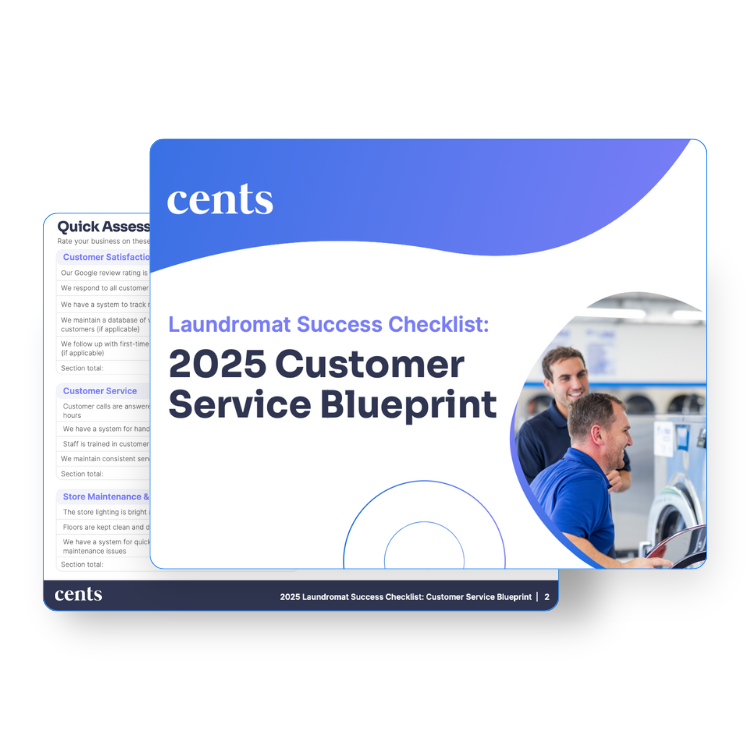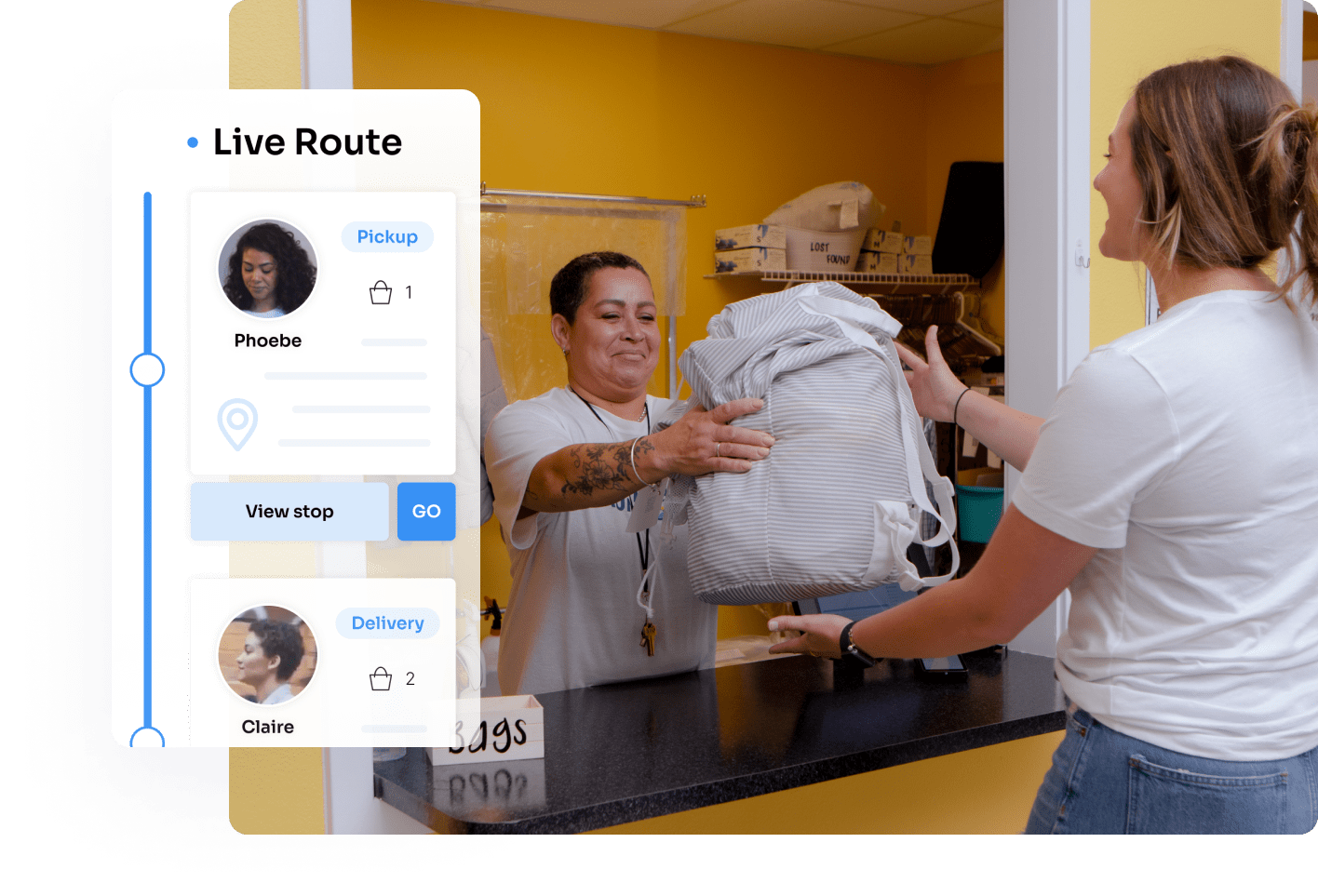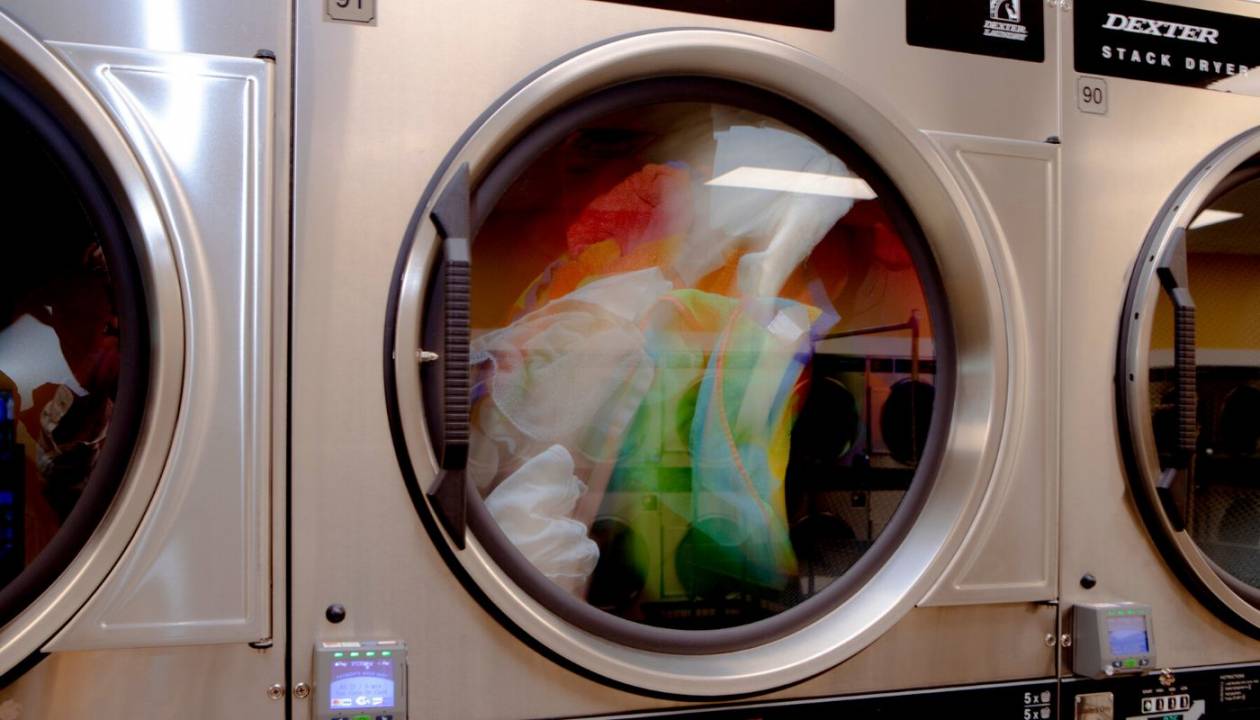The common narrative in the laundromat investment industry circles is that laundromats are a great source of passive income. The story goes, all an owner needs to do is collect quarters from their laundromat once a week and the business will basically be an ATM machine generating steady cash flow. The question is, is a laundromat truly a passive investment? Was it ever true? And, most importantly, is owning a laundromat a passive income opportunity that you should consider?
First, let’s talk a little about passive income laundromat ownership and why it’s an important consideration for laundromat owners.
Passive income and laundromat ownership
Passive income, which is highly sought after by investors, refers to a revenue stream from a rental property, limited partnership, or a semi-passive business like a laundromat, in which the recipient of the income isn’t actively working to earn it. The appeal of laundromat passive income lies in its ability to generate steady revenue streams with minimal time and effort, in turn providing the investor with financial freedom, flexibility, and funds.
This financial strategy not only diversifies the investor's income streams, it also positions the investor to build wealth over time. That said, it's not without its challenges. For example, passive investments often require significant start-up capital and returns can be unpredictable or slow to come to fruition. They can also come with laundromat management challenges or require specific knowledge, particularly for businesses like automated laundromat operations.
The allure of passive income laundromats drives many entrepreneurs to seek laundromat ownership. The standard narrative says all you have to do is collect money from machines periodically and the rest runs on autopilot. But is that story true?
In this blog post, we'll answer this question and highlight some important factors including the laundromat business model, the laundry market in the U.S., the pros and cons of laundromat ownership, laundromat profitability, financing options, equipment and technology considerations, and growth and expansion opportunities to make laundromat ownership more passive.
Discover how to efficiently oversee your laundromat from anywhere by exploring our comprehensive Guide to Remote Management—read the guide now and start optimizing your operations today!
Laundromat industry overview
The laundromat industry is a cornerstone of community services throughout the U.S. As a fundamental household necessity, it’s a recession-proof, boasts a robust market size, and presents strong laundromat ROI potential.
In 2022, the U.S. laundromat industry generated $19.77 billion in revenue, illustrating its substantial market size. The industry has experienced a steady growth rate over recent years and future projections look bright, especially with growing population density in urban areas. This is promising news for laundromat investors and those who are considering buying an automated laundromat.
The laundromat business model varies widely. The industry consists of independent laundromats, multi-store operators, and larger franchises. Given its low barrier to entry, new laundromat owners continuously enter the market, contributing to its competitive environment. Laundromat profitability hinges on strategic positioning.
Many owners are focusing on enhancing their service offerings with added conveniences, such as free Wi-Fi, welcoming seating areas, café offerings, and extended hours of operation. Others differentiate themselves through environmentally-friendly practices, such as using energy-efficient appliances or offering high-end organic detergents.
The rise of digital solutions, such as mobile apps for payment and real-time machine availability updates, also plays a major role in shaping the industry, offering opportunities to simplify their operations and breathe life into customer experiences. Such technological advancements simplify operations and increase laundromat passive income potential.
Pros and cons of laundromat ownership
Owning a laundromat offer a myriad of opportunities for savvy investors and entrepreneurs. However, the industry also presents some challenges.
3 key advantages of owning a laundromat
-
High cash slow: Compared to other investments like stocks or real estate, laundromats generate steady cash flow, an enticing factor for many investors.
-
Flexibility: Laundromat owners enjoy flexible time management. On average, owners can expect to spend about five hours per week managing their laundromat, which can be further reduced by leveraging laundromat management software like Cents.
-
Wealth-building potential: Laundromats offer opportunities for building equity, tax advantages, and scalability. Tools like Cents simplify this process, helping your business grow and evolve.
However, laundromat ownership also has its downsides
-
Physical location: Having a physical location implies overhead costs, machine maintenance, and direct interactions with customers.
-
Cash management: As primarily cash businesses, delegating cash collection duties can be difficult.
-
Customer demographics: Laundromats can attract vandalism and challenging demographics, necessitating a delicate balance between empathy and maintaining a clean, safe business.
Despite these challenges, the right tools and strategies can help turn the tide. Implementing comprehensive management solutions like Cents can streamline operations, allowing owners to harness the pros and effectively manage the cons, in turn pushing their laundry business closer to the realm of passive income.
Making a laundromat more passive
1. Market research and location selection
An important step in the process of setting up a laundromat, and thereby establishing a source of passive income, lies in thorough market research and a strategic selection of location. These factors can significantly influence the profitability and long-term success of your venture.
-
Population demographics: One of the most important aspects to consider is the demographics of the potential location. An area with a high density of apartments or housing without in-unit laundry facilities could provide a substantial customer base. Demographic factors such as age, income level, and lifestyle habits also play an important role in predicting the potential demand for laundry services.
-
Competition analysis: Investigate the presence and success of existing laundromats in your targeted area. Understanding your competition can guide your business strategy, influencing decisions on service offerings, pricing, and operating hours.
-
Foot traffic and accessibility: A location with high foot traffic, visibility, and easy access is crucial. These factors can naturally attract customers to your business without heavy reliance on advertising. Consider locations near supermarkets or other establishments people frequently visit.
By providing an important service in a strategic location, your laundromat can generate a steady flow of passive income, contributing to your financial stability and growth. This endeavor requires upfront effort, but with excellent planning and execution, the rewards can be more than worth it.
2. Laundromat financing options
Laundromats are an excellent opportunity for scalable business ventures. They’re recession-resistant with a high return on investment and consistent cash flow, making them attractive to both novice and experienced entrepreneurs looking to make a low time investment.
However, starting a laundromat involves substantial initial costs, including equipment procurement, location setup, and the acquisition of necessary permits and licenses. A considerable amount of financial planning is essential to maintain a healthy cash flow and ensure long-term success. Below, we provide an overview of these costs and various funding options to help you navigate your financial journey.
-
Initial costs: The initial costs of starting a laundromat business include equipment expenses, location costs, and the procurement of necessary permits and licenses.
-
Equipment: Key equipment for a laundromat includes washing machines, dryers, vending machines, change machines, and miscellaneous items like card readers and seating.
-
Location: The location should be accessible, visible, and in a densely populated area. Costs involved include rent or lease, possible renovation, and security measures.
-
Permits and licenses: Business licenses, zoning permits, and potentially environmental permits are needed to operate a laundromat.
-
Funding options: After you've estimated the initial costs, consider your funding options. These could include traditional bank loans, Small Business Administration (SBA) loans, alternative lenders, grants, crowdfunding, and specialized lending arms like Cents Capital. Each has its pros and cons, and it's essential to weigh these carefully to find the best fit for your business needs.
While starting a laundromat requires a significant initial investment, the potential for steady, near-passive income makes it a lucrative venture. With a strategic financial plan and the right funding, you can build a profitable and sustainable laundromat business.
3. Equipment and technology for efficient laundromat options
Entering the laundromat industry doesn’t stop at finding a location and buying machines—there are specific and important factors to consider. The equipment you choose significantly impacts the efficiency of your operations and overall customer satisfaction. Similarly, the role of technology in streamlining operations cannot be overlooked. Here, we dive into the types of machines and technology that are crucial for running a successful laundromat.
Quality is key in equipment selection
Choosing the right equipment is incredibly important for your laundromat. Your machines should be durable, efficient, and easy to use. These machines undergo heavy use, and investing in high-quality, reliable machines can reduce breakdowns and expensive repairs, ultimately contributing to the desired passive income.
Consider also adding vending machines that dispense laundry essentials such as detergent and fabric softeners. This not only negates customer frustration when they forget their supplies but also becomes an additional source of income.
Leveraging technology for simplified operations
Incorporating new technology can also enhance your laundromat's operations and customer experience. Adding mobile payment systems or card readers in your machines provides convenience for customers, removing the need to carry cash or search for change.
Smart machines, another innovation in the laundry industry, come equipped with features that alert you to any mechanical issues, monitor usage patterns, and even allow customers to check machine availability remotely. These features reduce downtime and optimize machine usage, further promoting passive income.
Remote monitoring and business management systems have become game-changers for laundry industry entrepreneurs who are looking for a passive income stream. They allow you to monitor operations from anywhere, making it easy to manage multiple locations. You can monitor income, track expenses, and view live security footage, all from your device.
Growth and expansion opportunities
Once your laundromat is up and running, it's time to consider growth and expansion possibilities. Scaling your business can contribute to a higher, more diversified income stream and often, more passive income. Here are a few strategies for growth and how they can enhance your revenue.
Opening additional locations
One way to scale a laundromat business is by opening additional locations. If your existing laundromat is thriving and generating steady passive income, it may be time to replicate this success elsewhere. When choosing a new location, be sure to conduct thorough market research, as you did with your initial store.
Expanding services
Introducing ancillary services is another excellent strategy for growth. This could include dry cleaning, alterations, or wash-and-fold services. By providing multiple services under one roof, you can draw in a larger customer base, increase the average transaction value, and enhance your passive income.
Don’t forget to assess the demand for these services in your area and consider any additional licensing or equipment you may need.
Partnerships with local businesses
Partnering with other local businesses can also contribute to your laundromat's growth. Consider local hotels or gyms that may need laundry services. You could also work with a nearby coffee shop or bookstores to create a co-working space, making your laundromat a community hub and attracting more foot traffic.
Exploring franchising opportunities
Franchising can be another lucrative growth strategy if you have a replicable business model. By franchising your laundromat, you could expand your brand more quickly. This model can also generate passive income through franchise fees and ongoing royalty payments.
While franchising can be a profitable venture, it also requires considerable time and resources to establish the franchise infrastructure, so it's important to do your research and consider seeking advice from franchising experts.
So, are laundromats a passive investment?
In the traditional sense, no, laundromats are not entirely passive investments. However, with the right laundromat business model, technology-driven automation, and outsourced management, you can turn your laundromat into a near-passive investment.
By incorporating smart laundromat technology like Cents Business Management Software, hiring a laundromat manager, or even investing in a laundromat investment fund, you can significantly reduce time spent managing your business while still earning a steady laundromat cash flow.
If you’re an investor looking for a semi-passive business opportunity, laundromat ownership may be the perfect fit—provided you take the right steps to automate, streamline, and scale.
Discover how to efficiently oversee your laundromat from anywhere by exploring our comprehensive Guide to Remote Management—read the guide now and start optimizing your operations today!
.png)

-3.png)








![Is a Laundromat a Good Investment? [Complete Investor's Analysis]](https://www.trycents.com/hubfs/doing-laundry-in-nyc-laundromat-header.jpg)
